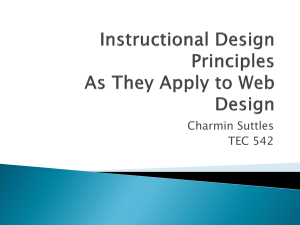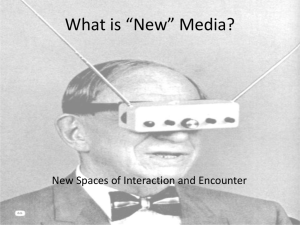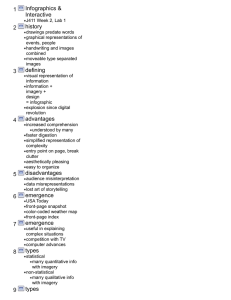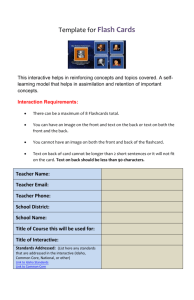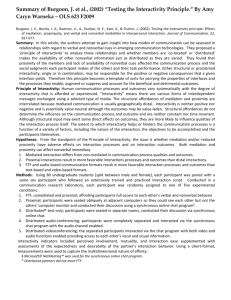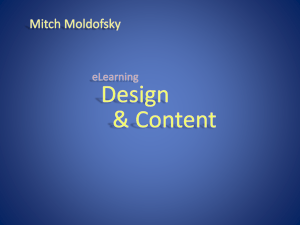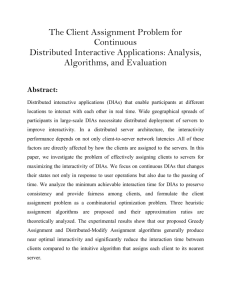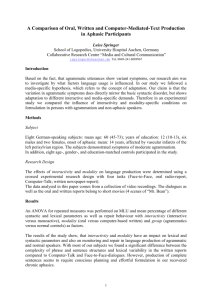What is happening globally in terms of mobile libraries and mobile
advertisement
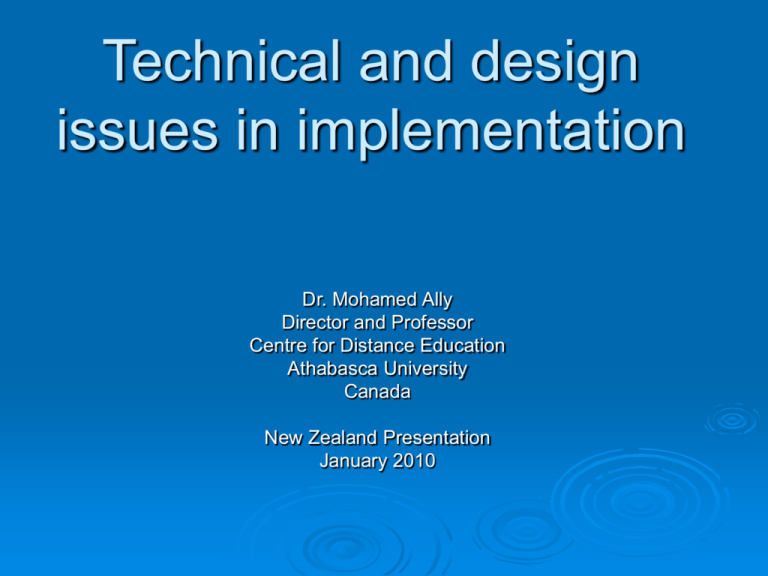
Technical and design
issues in implementation
Dr. Mohamed Ally
Director and Professor
Centre for Distance Education
Athabasca University
Canada
New Zealand Presentation
January 2010
Examples of Educational Activities
using Mobile Technology
Make a concept map summarizing a chapter
Keep track of class schedules, assignments, and
grades
Increase content accessibility for those with
disabilities
Use a tutorial for self-study
Take part in a collaborative simulation
Do research on the web
Participate in a collaborative project
Track a community service learning project
How mobile technology help
in Education
Education
is more than one way delivery
of information
Interactive
Support
Practice
Practical application
Build learning communities
Interactivity in Learning
Object interactivity (proactive inquiry) objects (buttons, people, things) are activated
by using a keypad or other pointing device.
Linear interactivity (reactive pacing) - the user
is able to move (forwards or backwards)
through a predetermined linear sequence.
Support interactivity (reactive inquiry) generalized and context-sensitive support
(help messages and tutorial supports).
Interactivity (cont’d)
Update Interactivity - individual application
components or events in which a dialogue is
initiated between the learner and mobilegenerated content (practice with feedback)
Construct Interactivity - the creation of an
instructional environment in which the learner is
required to manipulate component objects to
achieve specific goals (assemble an apparatus).
Reflective Interactivity - text responses to prompts
or questions where learners can reflect on their
response and make their own judgment as to its
accuracy or correctness.
Interactivity (cont’d)
Simulation
Interactivity - extends the
role of the learner to that of controller or
operator, where individual selections
determine the learning sequence.
Hyperlinked Interactivity (proactive
navigation) - the learner has access to a
wealth of information, and may "travel"
at will through that knowledge base.
Interactivity (cont’d)
Non-Immersive Contextual Interactivity extends the various interactive levels into a
complete virtual learning environment
(mutual elaboration) in which the learner is
able to work in a meaningful, job-related
context.
Immersive Virtual Interactivity - provides an
interactive environment in which the learner
is projected into a complete mobilegenerated world which responds to
individual movement and actions.
Why Mobile Learning
at Athabasca University
Course
material accessible on mobile
devices.
Need to find out if this was meeting
student requirements.
The purpose of this study was to
determine the devices being used by
students, their experience with course
materials access, and how useful they
thought using mobile devices to access
course materials was.
Delivering to Specific Devices
Device detection had been problematic because new
devices and mobile OSs and browsers were constantly
coming on stream.
Created problems for the device detection scheme used
to determine the mobile device:
String user_agent = request.getHeader("user-agent");
Changed to JavaScript to determine screen real estate:
if (screen.width >= 800) {
document.write('<style type=\"text/css\">…..
Stylesheet Delivery
If the screen size is >= 800,
delivers the full stylesheet
If screen size <
800, delivers
style sheet meant
for mobile device
Multimedia Displays
Device detection also
implemented for
applets, flash, large
graphics, etc.
Delivery of
alternate graphics
to mobile devices
Research Project
Intelligent Agent to Adapt Course
Materials for Mobile Learners
In
mobile learning students use mobile
devices to access course materials;
however, these devices operate in
different ways and have different
capabilities
Need a system to identify the device so
course material to be delivered in
heterogeneous computing platforms
This
project developed an intelligent
software agent capable of adapting to the
heterogeneous mobile computing
environment.
Agent Characteristics
The
agent can search for a conversion tool
according to the desired format and
convert the course materials automatically.
The agent is able to understand mobile
clients’ capabilities.
Process
Jena as an RDF (Resource Description
Framework) parser was used to obtain the
device information, providing a query language
called Resource Description Query Language
(RDQL, 2005) to query for device information.
Sun's Wireless Toolkit and PalmOS Emulator
were used as the testing environment.
An open and service-oriented architecture was
used to develop the agent and open application
interfaces to enable interaction and integration
seamlessly between learning objects repository,
course repository, and learning services.
Design Considerations
Software Portability. A Java-based cross-platform
software framework is one of the most important features
in this project.
Limited Computing Power and Memory Consumption.
We designed computing intensive tasks to execute on
the server side. The portable computing devices act as
a thin client.
Display Properties. The system provides support for
different devices by separating the presentation layer
from the data content. A number of different devices can
be supported without the need of modifying
programming logic and data content.
Design Flexibility and Scalability. The system is
designed in a distributed architecture that
prevents a single point of failure, improves
structural scalability and performance.
Caching to Save on Limited Resources. With
the support of the caching design, users can
read the cached course notes on the device to
avoid additional downloads.
Software Agent Support. Software agents can
be used to facilitate automated routine tasks,
residing in both the client device and the server
environment.
The overall architectural diagram
Activity Diagram: Client Server Negotiation
Questions for the Component
Attribute Criteria
Attribute Criteria / Question
Sample Answer / Settings
1. Vendor Name?
2. Model Number?
3. Is this device image capable?
4. Can this device display color?
5. Can your device output sound?
6. Can your device accept downloadable software?
E.g. Ericsson
E.g. T68R1
E.g. Yes/No
E.g. Yes/No
E.g. Yes/No
E.g. Yes/No
Steps in the Device Recognition
The
server agent will try to recognize the
device by its vendor and device names. If
the server agent cannot find that device
directly from the database, it will try to
recognize the device by the component
attributes.
What is Next?
Mobile
Libraries
Mobile social software
Personal learning spaces
LMS integration (Moodle)
Student modeling and adaptive learning
Conclusion
Must
deliver courses on a variety of
technology
Cater for the younger generations
Improve access with mobile learning
Reach out to the indigenous and remote
people
